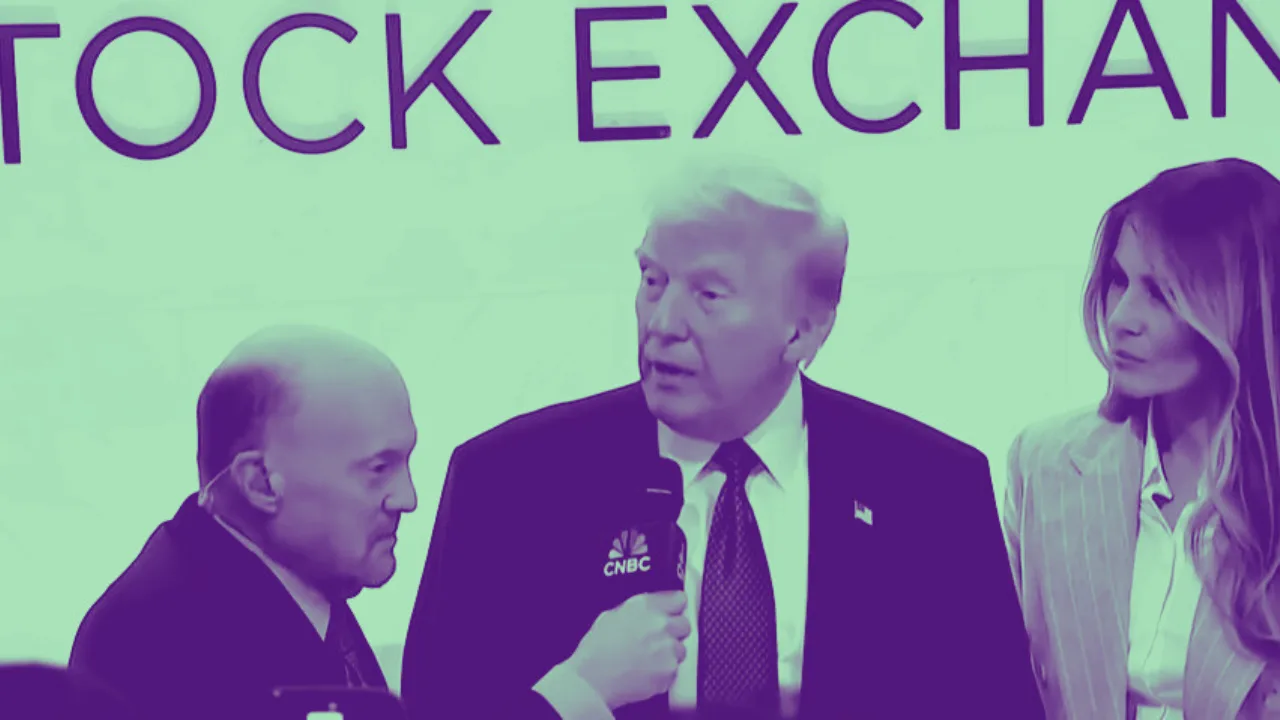In a climate of rising market volatility and economic uncertainty, investors are searching for signals about where the markets are headed next. According to Fundstrat’s Tom Lee—one of Wall Street’s most optimistic voices—there’s a powerful reason to stay bullish: President Donald Trump wants the stock market to rally, and that desire could shape White House policy in the months ahead.
Lee, the co-founder and head of research at Fundstrat Global Advisors, believes investors are underestimating just how much influence President Trump is prepared to exert to support financial markets. In Lee’s view, not only does Trump care about the health of the stock market, but his political strategy and economic policy decisions may increasingly be guided by it.
A Misunderstood White House Agenda
Contrary to recent narratives that the Trump administration is indifferent to Wall Street, Lee says there’s growing evidence of what he calls a “Trump put”—a subtle but powerful market backstop, similar to the well-known “Fed put.” This refers to the idea that the administration is prepared to shift or recalibrate economic policies, such as tariffs or trade negotiations, if equity markets begin to decline significantly.
While President Trump recently commented that he “can’t watch the stock market” as he focuses on “building a strong country,” Lee interprets this differently. He believes that Trump is, in fact, acutely aware of market trends and sees a rising stock market as a validation of his economic and trade policies—particularly his unconventional approach to tariffs and trade realignment.
Why a Market Rally Benefits Trump Politically
Lee points to several compelling reasons why President Trump is incentivized to foster a bullish market environment:
1. Public Support and Polling Trends
Recent polling data has shown some softening in public sentiment regarding the economy. Consumer confidence and manufacturing surveys have indicated that Americans are feeling the effects of trade disputes and inflationary pressures. These economic pain points are often laid at the feet of tariff-related stress.
For President Trump, who has made economic growth and stock market performance central to his political brand, a market downturn could pose risks to his reelection narrative. A robust rally in equities could help reverse any negative sentiment and reinforce his message of economic strength.
2. Avoiding a Recession
Tom Lee also notes the serious risk of a stock-market correction triggering a broader economic recession. Such a downturn would likely force the federal government to deploy substantial fiscal stimulus, further ballooning the national debt.
Given the high stakes, Lee argues that the Trump administration has every reason to maintain a pro-growth, market-friendly stance. Preventing a sharp downturn is not just about market optics—it’s about safeguarding the broader economy and avoiding costly economic fallout.
3. Capital Markets Must Remain Attractive
If the United States hopes to bring manufacturing back home—one of Trump’s key goals in reshaping America’s trade posture—then U.S. capital markets must be strong. Lee explains that businesses will need access to “friendly” financial conditions to fund onshoring initiatives.
A healthy stock market encourages corporate investment, supports job creation, and facilitates the financing of infrastructure and production capacity. If equity prices collapse, the flow of capital dries up, and Trump’s broader economic strategy could falter.
Signs of a Strategic Shift in Washington
Lee’s analysis is supported by recent reports out of Washington, including a Politico article suggesting that the White House is already preparing for a blame game should the tariff strategy misfire. This shows that key decision-makers are aware of potential economic blowback and may be ready to pivot to maintain market confidence.
Treasury Secretary Scott Bessent has echoed a neutral stance on Wall Street, saying the administration is focused on long-term growth rather than short-term market moves. But behind the scenes, Lee believes there is a growing recognition that a market sell-off would be politically and economically damaging. Hence, don’t be surprised if the administration shifts messaging—or even policy—to calm investors and revive momentum.
A Proven Track Record: Lee’s Market Predictions
Tom Lee is not just another analyst with an opinion. He has earned a strong reputation for accuracy in predicting stock market milestones. He correctly forecasted the S&P 500’s performance in 2023 and came very close again in 2024, reinforcing his credibility on Wall Street.
For 2025, Lee has set a bold year-end target for the S&P 500 at 6,600, a substantial increase from current levels. His forecast assumes continued economic resilience, moderate inflation, and policy adjustments that support risk assets—conditions he believes are well within reach, especially with a market-focused president in the Oval Office.
What Investors Should Watch Next
As the Trump administration navigates trade negotiations, economic data, and global geopolitical risks, the next few months could bring several market-moving developments. Here are a few signals that investors should keep an eye on:
- Tariff Policy Adjustments: Watch for any softening or renegotiation of tariffs, particularly with key partners like China and the EU.
- White House Messaging on the Economy: A shift in tone toward market support could precede actual policy changes.
- Stimulus Announcements: Infrastructure or tax proposals aimed at boosting growth would likely lift equities.
- Federal Reserve Coordination: While the Fed is independent, Trump has previously called for lower interest rates, and coordinated policy messaging could bolster market sentiment.
A Bullish Case for Long-Term Investors
If Lee’s thesis holds true—and the Trump administration actively works to support markets—then investors with a long-term outlook could benefit by staying invested. While short-term volatility is inevitable, the bigger picture may still point to new highs in the S&P 500 and other major indices.
This aligns with broader historical patterns. Since World War II, U.S. stock markets have typically performed well during election years, especially when incumbents seek to bolster the economy in the lead-up to November. If Trump continues that trend, the next several months could offer buying opportunities for disciplined investors.
Final Thoughts: Don’t Bet Against Trump’s Market Instincts
President Trump has long viewed the stock market as a barometer of national success and a scoreboard for his administration. While critics may dismiss this as superficial, it’s an approach that resonates with many voters—and one that could shape fiscal and trade policy in meaningful ways.
Tom Lee’s message to investors is clear: Don’t assume the White House is indifferent to Wall Street. In fact, the opposite may be true. With a proven desire to use policy as a lever for economic performance, Trump may very well act to ensure the markets finish 2025 on a high note.
For investors navigating a choppy market, that insight could be a reason to stay the course—and maybe even double down.





